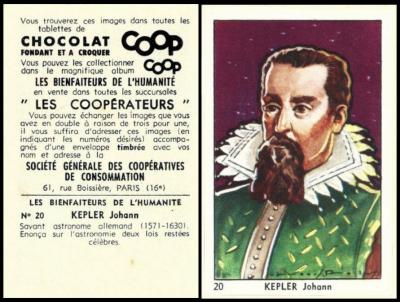
So we left off our story with Johannes Kepler going off to Graz in Austria to teach mathematics. He started there in 1594, and almost immediately began to plunge into his studies of astrology, especially his belief that it was a valid way to connect the human with the sky above, and also to make astronomy more accessible to everyone. He took some time off to get married, to a young widow with a young daughter. Her parents opposed the match, but in the end it worked out, and they were wed in 1595. Sadly both their first two children died whilst they were very small; but later on they had three more who survived, for a while at least.
In 1596 he was far along enough in his theory to publish a book, the Mysterium Cosmographicum. He had also started the research into four further books, on the sun and its stars, the planets and their orbits, their relative geographies, and a follow up covering meteorology and gravity. To write these he asked for assistance, especially with his research. One of the scientists he wrote to did not reply directly, but he did publish the letter, purely to get back at his own old rival, the Danish astronomer, Tycho Brahe. This did not particularly seem to bother Tycho Brahe, and in fact it inspired him to contact Johannes Kepler directly, which led to many discussions on all manner of scientific subjects, and to a kind of friendship even. Indeed it was Tycho Brahe who taught Johannes Kepler to never rely on what was written down in other people`s research, but always to question and to double check it.
They even met up, in Prague, in 1600, and stayed for several months, during which Johannes Kepler was able to see Tycho Brahe`s new, purpose built, observatory. However, towards the end of their stay, Johannes Kepler wanted more access to its features, and, rather foolishly, he tried to involve a third party, which led to a major falling out and a forced departure. However things cooled and contact was again made, which led to Tycho Brahe`s making a formal offer of employment, and also allowing the entire Kepler family to move there, something which came at just the right time, because in August 1600 Johannes Kepler was forcibly ejected from Graz for his refusal to convert to the Catholic faith.
Tycho Brahe died in October 1601, at the age of fifty-four, and Johannes Kepler was appointed to take over as the Imperial Astronomer. This also meant that he could stay in Prague, which he did, for the next eleven years.
The portrait of Tycho Brahe on our card today is taken from a portrait by Eduard Ender but not a contemporary one as Eduard Ender was only born in 1822, in Rome, Italy. He was the son of another artist, Johann Ender, an Austrian, and both men specialised in paintings of people who were long departed. We do not know from where they gained their source material, but it seems likely that they used contemporary black and white engravings, copying and colouring them in from their own imagination. Some of the paintings, like ours, were portraits, but others took a famous person and set them in a grand scene, often a fantasy.
Do note that our set today also contains a card of Kepler (number 20), showing here. This describes him as a "Savant astronome allemand (1571-1630)" - and that means an exceptional German astronomer.
The only thing I have not been able to discover is how many cards are in this set - so the number quoted in the heading is based on the highest number I was able to find on any site online. If you have a higher number, then please let us know so we can adjust this section.

